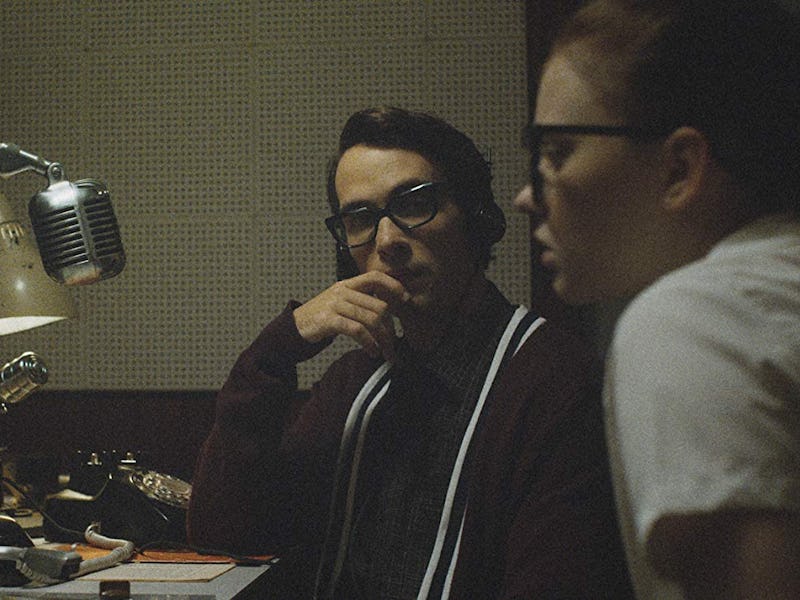The Best Twilight Zone Revival Came in the Form of a Throwback Alien Thriller
Do you hear something strange?

The best science fiction expands our sense of what’s possible, shines a light on humanity’s potential futures, or warns us about the terrors of our darkest social or technological tendencies. Rod Serling’s seminal series The Twilight Zone used sci-fi, fantasy, and horror elements to brilliantly exemplify these lessons, neatly wrapping each episode with a lesson that we, or at least the characters, should ponder. Between the original series and its myriad reboots, the series proved a lasting influence for subsequent science fiction, though its unique amalgam of intellectual stimulation and undeniable awe was rarely captured.
Five years ago, Andrew Patterson’s beautiful throwback sci-fi yarn The Vast of Night achieved that decidedly difficult task.
The 2019 film followed a pair of 1950s teenagers who discover something strange in the stars. In Cayuga, New Mexico, young switchboard operator Fay Crocker (Sierra McCormick) excitedly shows off her new tape recorder to her friend Everett (Jake Horowitz), the town’s teenage DJ. Fay discovers that a mysterious audio signal is interrupting Everett’s show, one she also hears over the phone lines, and Everett broadcasts the signal in hopes of getting information from listeners (promising “a piece of Elvis’ carpet” to any helpful caller). This act sets the pair on a pursuit of the truth behind the signal as the mystery deepens and eyewitness testimony mounts.
Thematically, The Vast of Night perfectly sits alongside the Twilight Zone’s best offerings. It follows humanity on the verge of experiencing something larger than everyday life, taking the protagonists on a progressive cosmic journey into the unknown. Classic Twilight Zone episodes often boast ahead-of-their-time takes on the issues of the day, brought home by Rod Serling’s authoritative narration, and The Vast of Night, too, takes a critical approach to the issues of its own nostalgic setting.
The investigation into alien activity reveals that the U.S. feds knew about extraterrestrial dangers but utilized African American soldiers in clandestine projects, taking advantage of American racism to keep things quiet. Elsewhere, a local woman suggests the alien force may be taking advantage of us, driving the planet in more dystopian directions. The film takes a subtly critical lens to these issues that was largely absent in the pre-Twilight Zone 1950s, handling them sans monologues in favor of a more modern and subtle storytelling approach.
The Vast of Night married nostalgic visual sensibilities with cutting-edge contemporary camerawork.
That isn’t the film’s only way it bridges the retro and the contemporary. As the camera slides forward into the nostalgic TV in the movie’s opening, the cinematography also becomes sleek and in color (but with a nicely retro grain). It regularly reminds us that this is a ‘Paradox Theater’ episode, occasionally switching in and out between color cinematography and the grainy black-and-white of a 1950s TV screen (complete with rounded edges). This is combined with gorgeous tracking shots through the town that see the camera float through Cayuga like a low flying saucer. These long takes showcase expert technical precision, like one particular shot that took 40 takes, with the VFX team stitching together different legs of the camera’s journey. It’s a memorably beautiful moment that seamlessly blends a nostalgic visual feel with cutting-edge camera work.
The Vast of Night is a tense sci-fi story that beautifully evokes Twilight-Zone-esque feelings of cosmic awe and wonder in a way we rarely see these days. The teenage protagonists we follow have a charming balance of intelligent sleuthing and earnest reverence for the stars, making it easy to fall under the film’s spell as they pursue the truth. It also clearly sets itself within that kind of world in introduction, setting, and theme, but each time balanced with a contemporary approach that feels ever-timely. But despite its nostalgic trappings, The Vast of Night remains one of the most surprising and elegantly plotted science fiction tales of the last few decades.